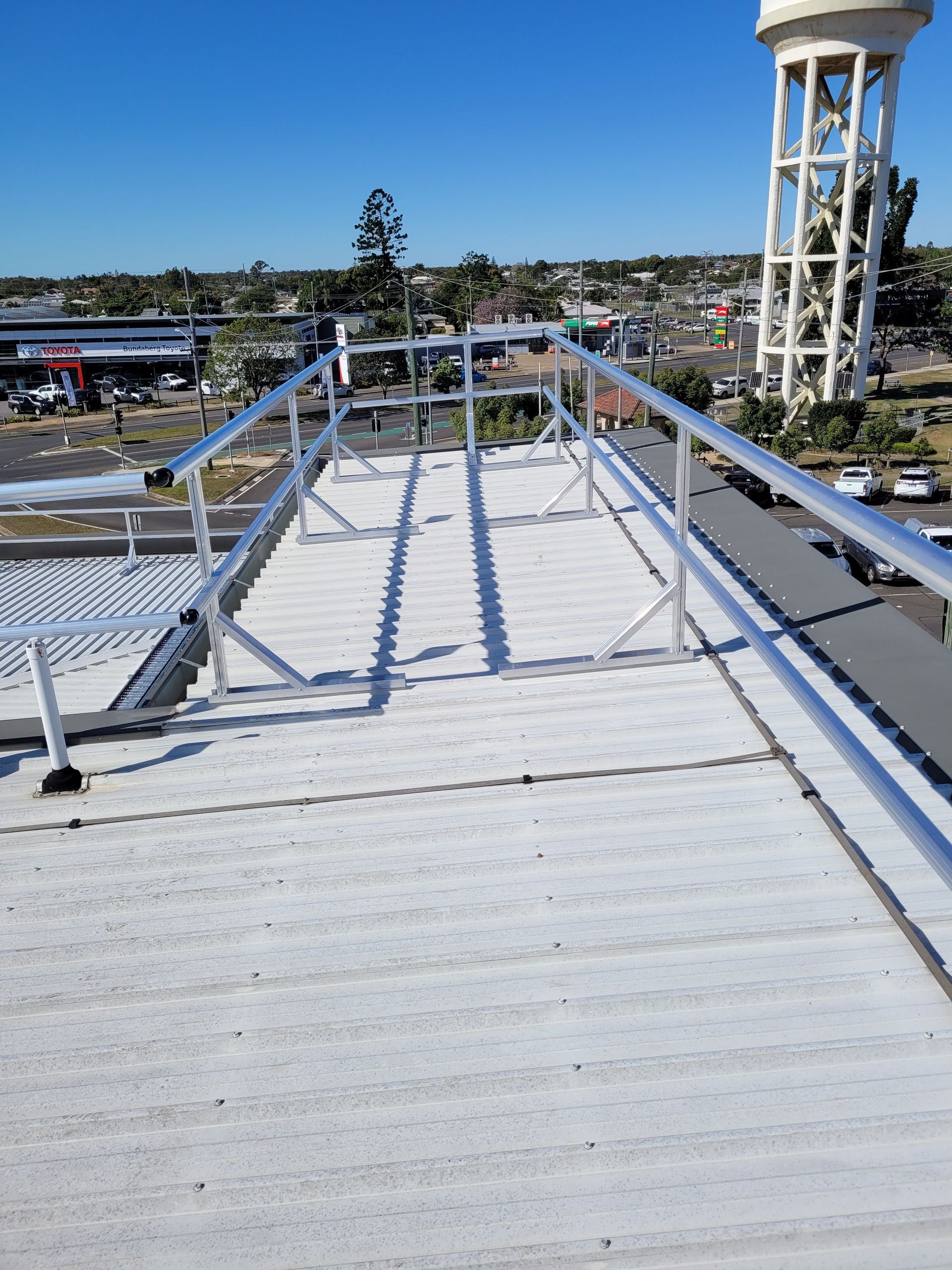Roof Railing
Roof Rails: The Simplest and Safest Fall Protection Solution
Roof rails are one of the most effective and reliable height safety solutions, providing continuous edge protection without the need for personal protective equipment.
Designed for convenience and security, roof railing systems are ideal for areas that require frequent access, such as rooftops used for maintenance, inspections, or servicing equipment.
Unlike other fall protection methods, roof rails offer a stable, hands-free safety barrier, reducing the risk of falls and ensuring compliance with workplace safety standards.

Roof Railing: Essential Protection for Safe Work at Height
When working at height, ensuring proper fall protection is not just a safety measure - it’s a necessity. Roof railing systems provide a simple yet highly effective way to prevent falls, ensuring workers can operate with confidence on rooftops, elevated platforms, and other hazardous areas.
The Importance of Roof Railing Systems
Falls from height are one of the leading causes of workplace injuries, making compliance with safety regulations a top priority. Whether for roof access, maintenance, construction, or inspections, a well-designed guardrail system acts as a crucial barrier, eliminating the risk of unprotected edges.
A roof railing system offers:
- Collective Fall Protection – Unlike harnesses and anchor points, roof rail systems protect all workers without requiring specialised equipment.
- Permanent and Temporary Options – Depending on your needs, you can install either a permanent guardrail system or a temporary guardrail for short-term projects.
- Compliance with Safety Standards – A well-engineered roof guardrail meets or exceeds height safety regulations and industry best practices.
- Non-Penetrating and Fixed Solutions – Choose between free-standing, weighted safety rails that don’t damage roofing or fixed guardrails for long-term security.
Choosing the Right Guardrail System
Not all roof railing systems are created equal. Different work environments require different solutions, such as:
- Freestanding Roof Railings – Quick to install with no need for drilling, these are ideal for temporary projects or leased buildings.
- Fixed Roof Guardrails – Bolted or welded in place for long-term durability, offering a permanent fall protection solution.
- Collapsible Roof Rails – Designed for aesthetic purposes, these rails fold down when not in use, maintaining the building’s appearance.
Not sure whether to choose a foldable or permanent guardrail?
Learn the key differences and find the best guardrail system for your needs in our foldable vs. permanent guardrail guide.
- Parapet Guardrails – Installed along low parapet walls to enhance edge protection without major structural modifications.
- Guardrail with Walkway System – Combining a guardrail system with a roof walkway enhances safety and accessibility, providing a stable, anti-slip surface for workers while ensuring full-edge protection. Ideal for rooftops with frequent maintenance needs, these systems improve compliance with height safety regulations and reduce wear on the roofing material.
Key Benefits of Roof Rail Systems
A high-quality guard rail system does more than just comply with regulations; it enhances safety, efficiency, and peace of mind. Key advantages include:
+ Enhanced Worker Safety – Eliminates fall hazards at the source.
+ Quick Installation – Minimal disruption to work operations.
+ Versatility – Suitable for various roof types, from flat to sloped.
+ Low Maintenance – Once installed, roof rails require little upkeep.
+ Cost-Effective – Prevents costly accidents, insurance claims, and downtime.

Australian Standards and Guidelines for Roof Railing
In Australia, roof railing systems must comply with strict safety regulations to ensure effective fall protection. The primary standards governing height safety and guardrail systems include AS/NZS 1657:2018, which sets the requirements for fixed platforms, walkways, stairways, and guardrails, and AS/NZS 1891.4:2009, which outlines fall protection systems and their safe use.
Additionally, compliance with Safe Work Australia’s Model Work Health and Safety (WHS) Regulations is essential to meet legal obligations for working at height. These guidelines emphasise that guard rails should be at least 900mm to 1100mm high, include mid-rails and toe boards where necessary, and be engineered to withstand expected loads.
Whether installing a permanent guardrail or a temporary safety rail, ensuring adherence to these standards is crucial for worker safety, regulatory compliance, and liability reduction.

Making a Smart Choice for your Height Safety Solutions
When it comes to safe work at height, choosing the right height safety solutions is critical. Safetylyne specialises in engineered fall protection systems, providing top-tier roof railing options that meet Australian safety standards. With expert advice, quality materials, and reliable installation, we ensure your workplace is compliant, secure, and efficient.
Whether you need a temporary guardrail for a short-term project or a permanent guard rail for long-term protection, Safetylyne has the expertise to deliver the best solution. Get in touch today to discuss your roof access safety needs.
As trusted height safety project engineers, we design and deliver engineered access solutions tailored to your specific needs.
From roof access stairs to comprehensive guardrail systems, we ensure every solution is compliant and cost-effective. While temporary guardrails are available when needed, our focus is on long-term, high-quality height safety systems.
Contact Safetylyne today to find the best roof access safety solution for your project.
CONTACT OUR TEAM OF ROOF SAFETY EXPERTS